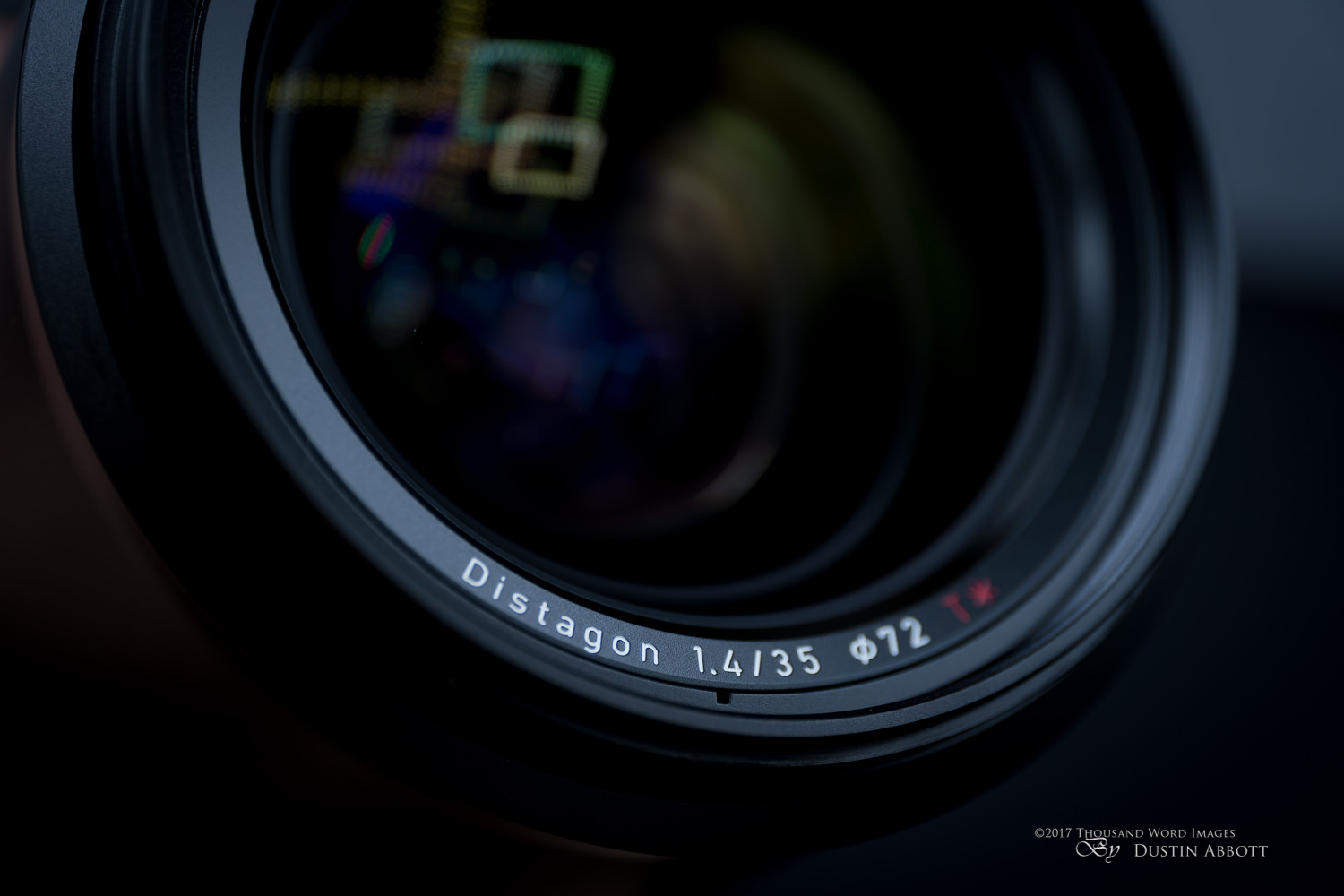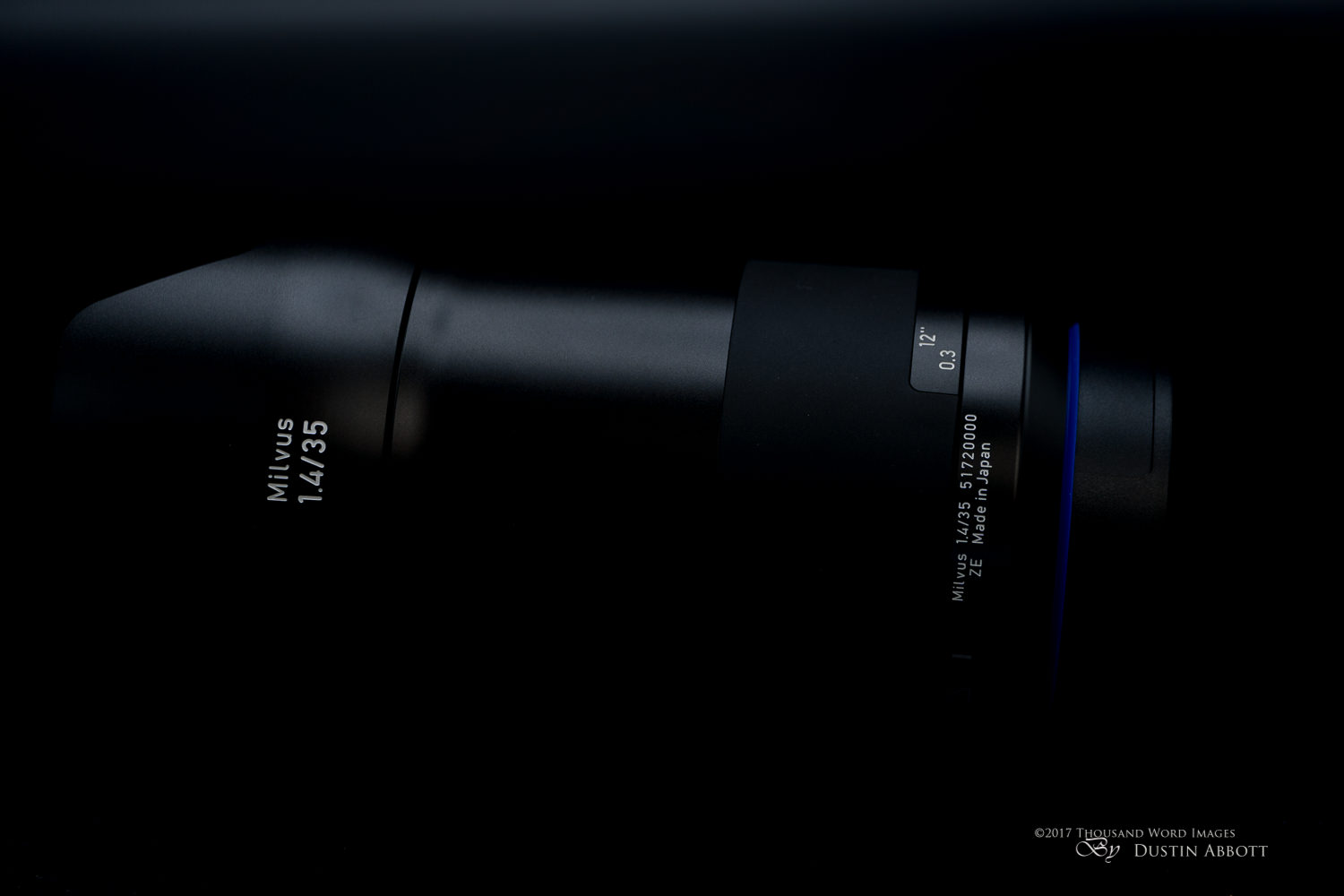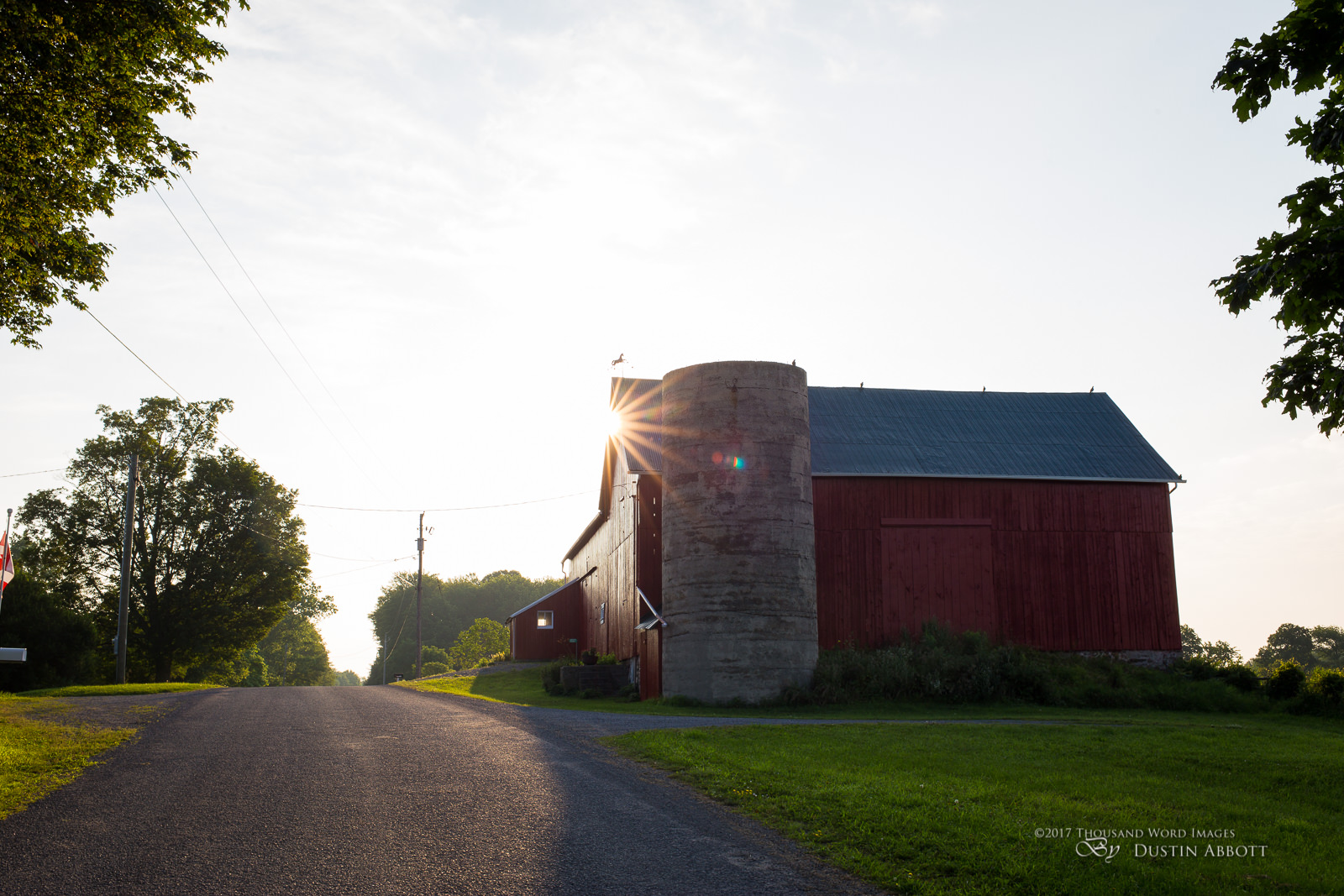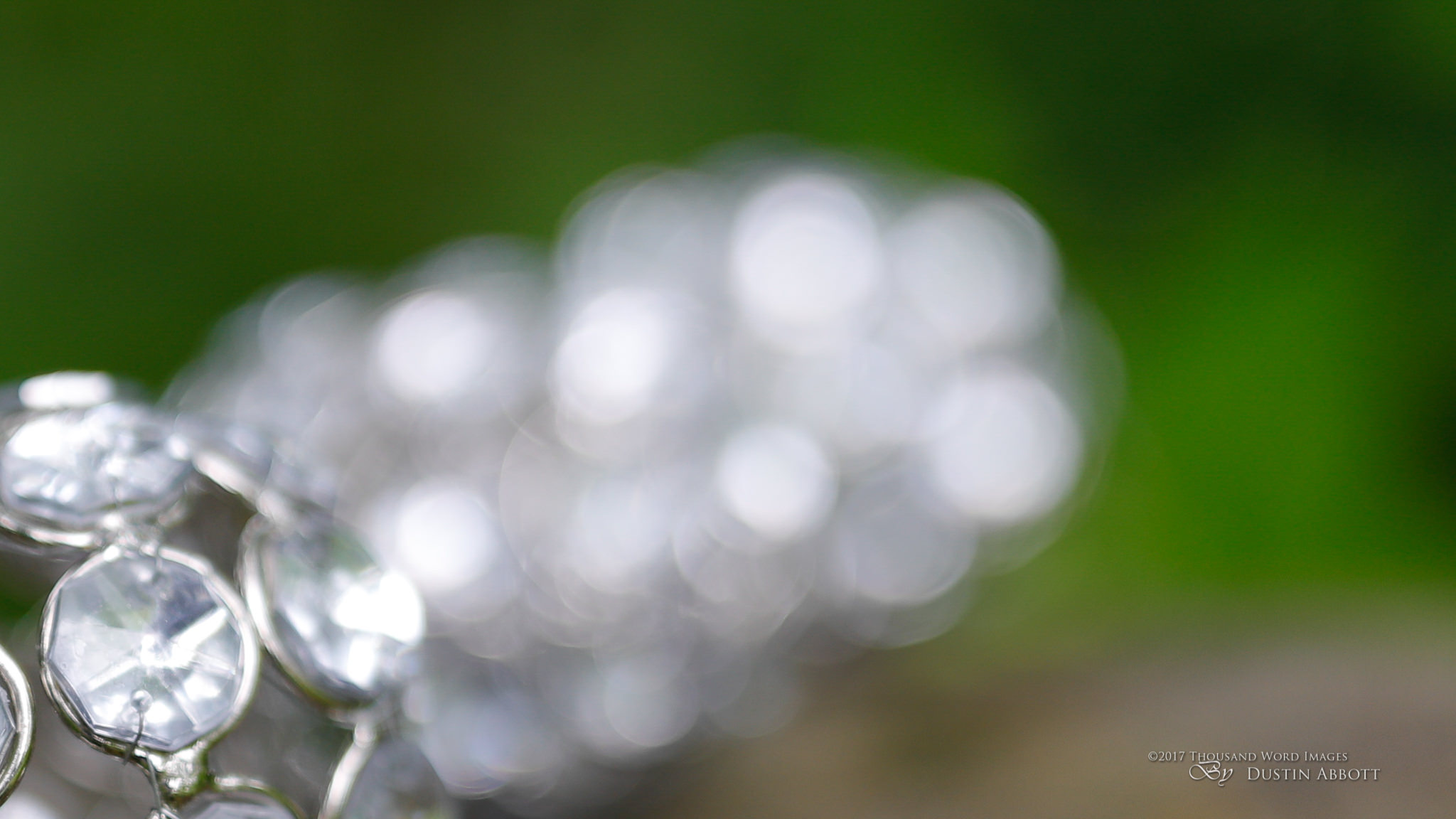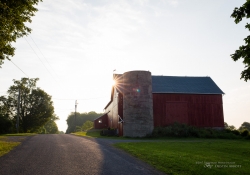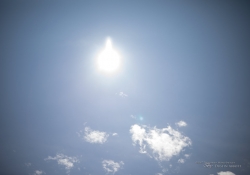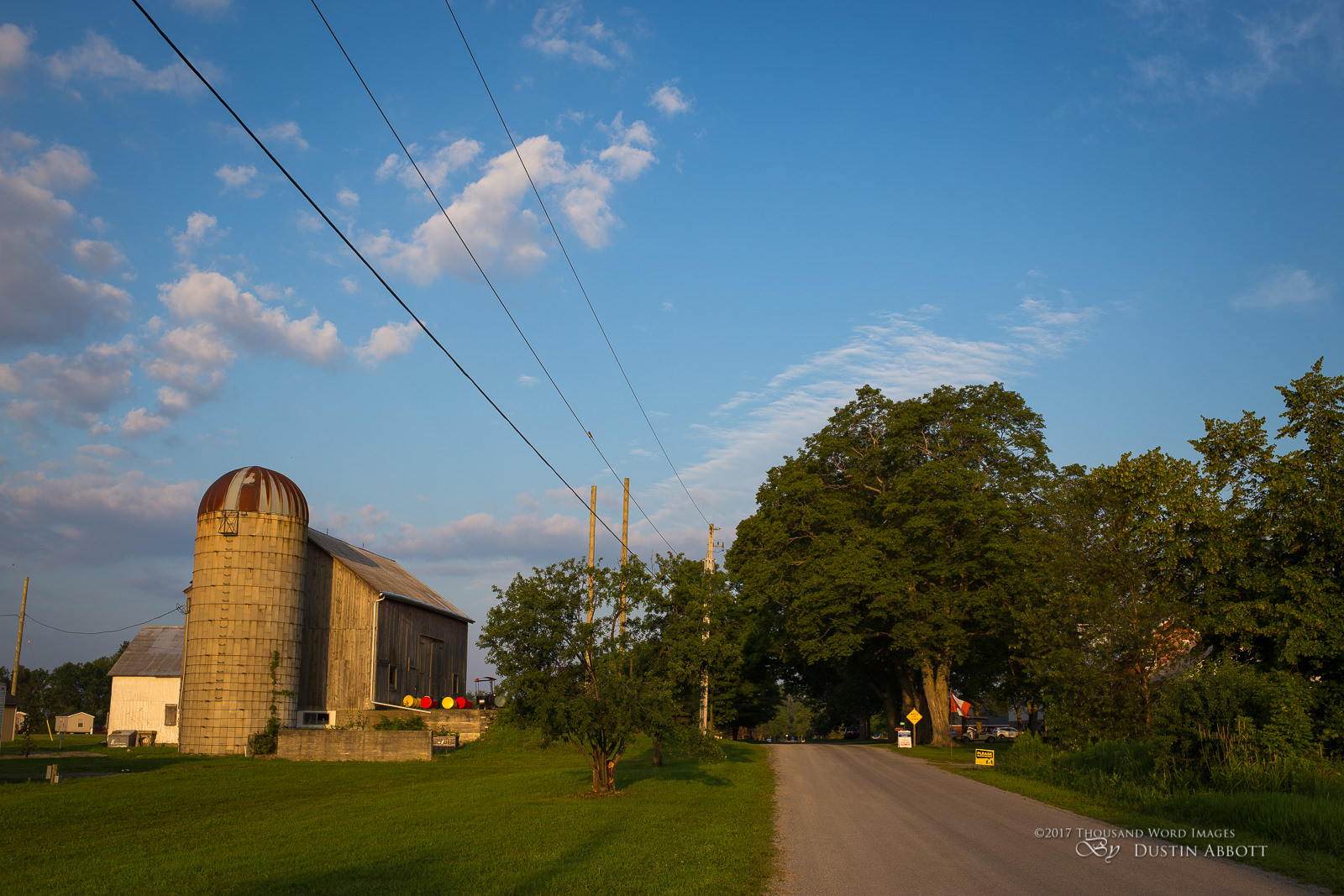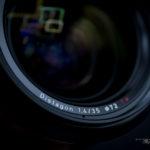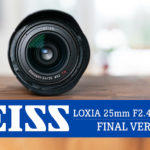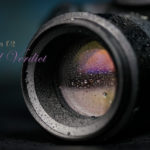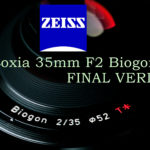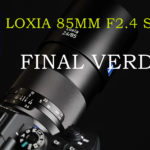There are few focal lengths more important to a lens makers lineup than the 35mm focal length. It, along with the 50mm, tend to makeup the most commonly used focal lengths for those using prime lenses. When Zeiss launched the Milvus lineup in 2015 the initial “batch” included six lens, one of which was a 35mm lens. That lens was the Milvus 35mm f/2, but it was largely a repackaging of an existing optical formula (a good one!) in the new and improved Milvus housing. Zeiss’ existing 35mm f/1.4 lens (hereafter referred to as the “Classic”) was not given the Milvus treatment, and now we know why. Fast forward nearly two years and a completely new Milvus 35mm f/1.4 has just been announced. Zeiss recognizes the importance of this focal length, and such a lens faces some serious competition from both upstart Sigma and more realistically (at least for Canon shooters) the seriously amazing Canon EF 35mm f/1.4L II. I own the latter lens, and it is exceptional. When I reviewed it in December of 2015 I called it the most “Otus-like” prime lens that Canon has ever produced. But no one does optics quite like Zeiss, and so I was excited to see just how exceptional they could make a lens in this highly contested focal length. The Zeiss Milvus Distagon T* 35mm f/1.4 should begin shipping to retailers in August 2017. I’ve had a chance to take an advance look at the lens, and here are my conclusions.
Prefer to watch your reviews? I’ve got you covered. Check out my thorough video review here:
Lenses don’t exist in a vacuum, and I prefer to not review them in a vacuum, and so I will make a number of references to the Canon 35mm f/1.4L II, as I feel it the top competitor to the new Milvus 35.
Build, Design, and Handling
The Milvus lineup from Zeiss has the most premium build quality that I’m aware of among SLR lenses. They are all made from a metal alloy with a frosted, anodized finish that feels as premium as fine Swiss watch. One of the key advances for the Milvus lineup was the introduction of a thorough weather sealing (Zeiss actually uses the language “weather-sealed construction” rather than the more ambiguous “weather-resistant” description some other lens makers employ). The Milvus 35 is no exception, and has thorough weather-sealing to protect against dust and moisture. I’m particularly fond of the Zeiss-blue rubber gasket near the lens mount that strikes me as being a nicely Zeiss equivalent of Canon’s red ring.
Like the Classic lens the Milvus 35 employs a Distagon optical formula, though this one has been beefed up with one rear aspherical element and five anomalous partial dispersion elements to “control both spherical and chromatic aberrations for improved sharpness and clarity.” If you want a firsthand look at the lens, check out this video:
The lens retains a 72mm front filter thread, which it shares with both the Classic Zeiss and the Canon 35L II. The Milvus 35 has definitely added some size and bulk compared to the Classic lens, though. The older lens weighed 1.83lb/830g, but the new one is a much heftier 2.58lb/1170g. It is wider around (3.07”/78mm vs 3.34”/84.8”) and longer (4.72”/119mm vs. 4.91”/124.8mm). These size increases are modest, but we have seen a trend that the Milvus lenses are much heavier than the Classic lenses due to more robust build and weather sealing. The Canon 35L II has an excellent build, but its reliance on an engineered plastic shell results in a much lower 1.67lb/760g weight. It is also a bit narrower (3.17”/80.4mm) and shorter (4.15”/105.5mm) than the Milvus 35. The Milvus 35 sets a new size and weight threshold for a 35mm lens and has a noticeable bulk to it. It actually outweighs the Milvus 135mm f/2 lens that I own by nearly 50g. If you are looking for a light, compact lens, look elsewhere.
The lens has a minimalist ethos to it, with the majority of the barrel being smooth, anodized black metal. The first third of the lens is dominated by a rubberized focus ring that has the distance markings along a section near the bottom. In a bit of a departure from some of the other Milvus lenses I’ve used the vast majority of barrel actually rotates with the focus ring, so technically you could grab the lens at just about any point and focus with it. Unlike some Milvus lenses the Milvus 35 is a completely internally focusing lens, and so its length remains constant at all focus distances. The focus action is just what I expected – perfect. It is buttery smooth and perfectly damped. It glides along beautifully, but with enough damping to ensure that once you achieve focus nothing is going to drift. I estimate the focus throw at somewhere near 200 degrees.
The view at the front of the lens is my favorite of all lens makers. I love the look of a Zeiss lens, with the great reflections off the T* coatings, the elegant “Zeiss” stamped in metal along the top and lens designation stamped along the bottom. The included lens hood is petal shaped and made of the same anodized metal with a flocked interior to stop stray light from bouncing around. I love the way that the Milvus lens hoods are incorporated into the actual design and the lens profile is completed with it attached. It gently curves out from the barrel and has classy little Zeiss badges on each side and “Milvus 1.4/35” stamped in white on the top. These hoods are a thing of beauty, and if you appreciate little craftsmanship details these are always a treat. The design also reverses tightly for storage and adds little additional width.
It is worth noting that while the new lens shares the minimum focus distance with the Classic lens (11.81”/30cm) the reproduction ration/maximum magnification figure has increased from 1:5/0.20x to 1:4.6/0.217 (roughly 0.22x). This is give it a slight edge over the 35L II’s 0.21x.
The new lens has a more complex optical formula, with 14 elements in 11 groups compared to the simpler 11 elements in 9 groups of the Classic lens. There will be those of you concerned by the increase in complexity in this optical formula, but I think you can lay those fears to rest. It’s interesting to note that the Canon 35L II also has 14 elements in 11 groups.
All in all this lens is exactly what I expected: a big, heavy, beautifully crafted lens whose mechanical function is at the very pinnacle of performance. But what about the optics housed in that big, beautiful body?
Optical Performance
My testing process is a mix of standardized testing and then generalized real world shooting. The latter gives me more of a feel for the lens and context for the results I get in the standardized tests. Real world observations often reveal nuances that get overlooked in a lab, which is why sometimes my findings run contrary to other early test results. My standardized tests focused on resolution (at three focus distances) and then on real world bokeh and rendering. I used the Canon EF 35mm f/1.4L II as a benchmark, as it is (in my opinion), the best non-telephoto prime that Canon has ever made and because it faired quite well even when I compared it to the mighty Zeiss Otus 28mm f/1.4 when I compared the two.
Milvus 35 Resolution
I ran my comparison tests out of doors at three different distances. I used the side of a barn with weathered, knotted wood for both close and medium focus distances and then on a bluff overlooking a valley for infinity comparisons. For this test I used a high quality carbon fiber tripod, mirror lockup, 10x Live View Focus, and 2 second delay. I shot comparisons at each full aperture stop between f/1.4 and f/8 and then compared the results at pixel level. If you would like to see more of the results and the details, I recommend that you watch this video episode here:
I’ll include a few comparisons here, but I will mostly summarize my findings. At close distances, I actually found that the Canon was sharper and had a bit more contrast at wide apertures. The difference was not significant, but was noticeable. Both lenses are exceptional, but the Canon was a bit sharper. Here are pixel level crops from across the frame at f/1.4:
From f/2 to f/2.8 the lenses are essentially equal. At f/2 there is a “splitting hairs” advantage for the Canon at some points, but not enough to be noticeable in the real world. At f/2.8 they look nearly identical.
After f/2.8, however, the roles reverse, and the Zeiss becomes sharper and with higher contrast. At f/5.6, for example, there are definitely spots across the frame where the Milvus looks sharper and more contrasty. It delivers perfect resolution from corner to corner, making it exceptional for landscape use.
In some ways the Milvus 35 follows the familiar pattern of classic Zeiss lenses (sharpness increases as you stop the lens down), though in the case of the Milvus 35 you start with much higher resolution than past lenses at wide apertures.
At medium distances, the results were more similar than different. Both lenses produce extremely detailed results at all apertures with the same generalized patterns, though the Canon advantage at large apertures almost vanished. Images below include a crop from the left portion of the frame wide open, a full image comparison, and a center crop stopped down to f/2.8.
At infinity the Milvus is slightly stronger, though the centers were close. Even wide open the Milvus 35 can produce a credible infinity focus image (which really wasn’t the case with any wide aperture prime a few years ago). Here’s a look at the image without vignette corrected, with vignette correct, and a center crop.
With a high resolution body (and my 5D Mark IV is far from the highest resolution body available), you can produce incredibly detailed landscape images stopped down a bit. At f/5.6 even the pixel level crops are highly detailed (I’ve included pixel level crops from the right side and center of the image).
I personally feel like the Milvus 35 makes for a beautiful landscape lens:
These tests also revealed a couple of other patterns. At f/1.4 the Canon vignettes noticeably heavier than the Zeiss, which negatively impacts its image quality along the edges. This comparison reveals that while both lenses vignette, the Zeiss vignette is less heavy (I’d estimate the advantage from one half to two thirds stop of light) and also penetrates the frame less far. By f/2.8 the Milvus 35 is essentially vignette free, while a bit remains on the Canon.
The superior color science (accuracy, rendition, and richness) of Zeiss was also on display. The more than 170 years of experience in optical design shows in most every Zeiss lens that I review. There’s just something special about both the color accuracy and the color rendition of Zeiss glass, and that becomes clear every time I put a lens from a different manufacturer next to a Zeiss. It’s part of the reason why Zeiss lenses are expensive, more difficult to use (as manual focus lenses), and yet they continue year after year as a successful company.
This isn’t to say that the Canon color is poor; it isn’t. It’s close, in fact, but those with a discerning eye will see the difference. Much like high end audio equipment the distinction might be lost on those expecting a night and day difference, but to audiophiles the difference between mid-range and high-end equipment is easily distinguishable.
The superior contrast of the Zeiss can also be seen in the difference between light and shadow areas, where a stronger distinction can be seen. One final interesting observation (and one that surprised me), is that that third party Zeiss actually produced slightly more accurate metering results. I shot these comparisons in AV mode so I could focus on aperture settings (it was a bright day), but when I reviewed the images at home I found that the Canon produced slightly underexposed images by comparison to the neutral Zeiss.
So, to my surprise, the Canon actually outresolved the Milvus (by a small margin) at wide apertures, but the Milvus demonstrated superior optical characteristics in other aspects of my resolution tests, including having less vignette, superior color, and more contrast. Taken out of the comparison zone, however, we find that the Zeiss definitely produces high resolution at all apertures, though there is a bit of haze at a pixel level wide open. Still, here’s a pixel level crop:
Kind of hard to complain about that! Or this:
We live in a day, however, that many photographers value sharpness above all else (which is, in large part, why Sigma’s ART series has done so well), so for many of you Round 1 goes to the Canon 35L II, particularly since it is cheaper and has autofocus! But the battle isn’t over…
Milvus 35 Rendering and Bokeh
I ran a series of secondary tests at close (about 2 feet) and medium close (about 8 feet) distances to test the bokeh (defocused areas) and rendering from the lenses. 35mm is not a focal length that strongly blurs backgrounds outside of that range, and, in fact, depth of field is already 1.35 feet at an 8 foot shooting distance and using the maximum aperture of f/1.4. Despite those physical limitations, however, a good 35mm is capable of producing beautiful bokeh when used to its advantages. A good 35mm lens can also create a really beautiful 3 dimensional effect due to not compressing the subject/background ratio like a telephoto lens does. You can get an interactive look at the bokeh and rendering here:
Due to a good minimum focus distance and magnification figure (0.21x for the Canon, 0.22x for the Milvus 35), both lenses are actually capable of producing of a strong blur at close focus distances, and it also worth noting that both lenses resolve well near minimum focus (which isn’t true of all lenses). This gives you the ability to deeply crop images while retaining excellent detail.
At the close focus distance test the main takeaway is that the Zeiss produces less busyness in some transition areas. The Canon has slightly harder edges which can produce unnecessary detail where the Zeiss keeps things nice and smooth. Both lenses will produce a “cat eye” effect near the borders of the frame with out of focus highlights (I’ve yet to see a lens in this focal range that doesn’t). Both lenses are nice in the areas that are fully defocused, but the Zeiss handles the transition zone from focus to defocus better. Note the first flower crop and how the Mivus 35 produced a softer blur with less hard edges. I also find the the defocused area on the forest floor (second crop) is busier on the Canon image.
When the lenses are stopped down that advantage diminishes.
At medium distances I see a similar story. The Canon has a tendency to form circular highlights in the defocused foliage that was the primary “bokeh producer” in my test shots. This produced a busier background compared to the Milvus 35, which instead kept edges nice and soft. Once the lenses are stopped down that advantage disappears, as more detail begins to be rendered in the defocused region (depth of field increases) and both backgrounds become more busy.
I recognize that bokeh quality is highly subjective, but in my opinion I find the bokeh quality from the Milvus 35 to be superior.
One thing that I noted in these comparisons was that the Canon consistently framed a little wider than the Zeiss at all focus distances. It’s not a major difference, but there is at least 1mm difference in focal length.
I really didn’t see any chromatic aberrations from either lens, even when I submitted them to what I consider to be a torture test. This is an area of extreme accomplishment for both lenses, and the Zeiss is exceptional on this front.
Neither of the lenses is exempt from some flare issues when a bright source of light is in the frame. This was one of my chief areas of complaint when I reviewed the Canon, as I found the much less expensive Canon EF 35mm f/2 IS actually better on this front. The performance of the Milvus 35 is better is than the 35L II, as the flare pattern is more localized and less disruptive. Neither lens suffers from a major loss of contrast, and I suspect the flare pattern from the Milvus 35 will be perceived as fairly artistic by many shooters. I don’t consider this to be a significant issue at all for the Milvus, but just note that its performance here is less complete than the chromatic aberration control. The best 35mm lenses for flare resistance are the less expensive Canon 35mm f/2 IS and Tamron SP 35mm f/1.8 VC.
While shooting these tests I did note one of the other qualities that Zeiss lenses are famous for – microcontrast. When shooting three dimensional objects the Zeiss has great ability to resolve fine details which allows its images to seem a bit sharper than those from the Canon despite my observation that of the two the Canon is actually resolves a bit higher. That three dimensional rendering is one of the reasons that some shooters value Zeiss lenses so highly.
My image quality conclusion is that those concerned that the new Milvus design would rob the Milvus 35 of some of the “character” of the previous generation Distagon 35 is largely unfounded. The Milvus 35 at wide apertures has a nice mix of resolution on the plane of focus, a strong three dimensional rendering, and a highly pleasing defocused region. I seriously doubt that any shooter would be disappointed with the image quality that the Milvus 35 produces.
Finally, I do recognize that I review lenses from the unique perspective of a Canon shooter, and, as such, we are spoiled with a truly exceptional first party lens at this focal length. Nikon shooters, however, are not so fortunate, so if you are looking for an exceptional 35mm lens, this Zeiss stands easily at the top of the heap. What about the Sigma 35mm f/1.4 ART? It is an excellent lens [optically] at a reasonable price, but don’t expect its image quality to compare when closely examined (in real world, not lab, shooting). Secondly, it is plagued with inconsistent focus (in my own tests and in the anecdotal reports from many, many shooters). I directly compared the Sigma with the Canon 35L II when I reviewed it and felt the Canon produced more special images (and was much more accurate when autofocusing), so I chose the Canon over the Sigma personally. Some shooters report fine focus accuracy from the Sigma, so your mileage may vary, but the Sigma 35 ART and the Milvus 35 are really two very different kinds of lenses despite sharing the same focal length and maximum aperture. The color science and overall rendering of the Milvus are definitely superior, though the Sigma is very close in terms of resolution.
Conclusion
When this lens was announced I had high expectations for it. Zeiss elected to not carry over the existing Distagon 1.4/35 into the Milvus line when they announced it, which in hindsight was probably the signal that they were already working on its replacement. When this all-new lens was announced, I fully expected it to be special, and my expectations were largely realized. I will confess to some surprise that the Canon EF 35mm f/1.4L II is a bit sharper at wide apertures (and undoubtedly some reviews will get stuck there), but when I explored other aspects of the image quality I found a more complete picture. The image quality from the Zeiss Milvus 35mm f/1.4 Distagon T* is rich and nuanced; fully in line with the high standard of the Milvus lineup and the Zeiss brand. The Milvus 35 comes with the typical Zeiss drawbacks too: manual focus only, heavy, and expensive. If you are a Zeiss fan, then you expect those things and are willing to accept them because of the magnificent optical and mechanical performance of the lens. If you are an owner or admirer of the Classic Distagon 1.4/35 and wonder if the new, higher resolving Milvus has retained the character (rendering) of the Classic lens, I believe that I can safely say that nothing has been lost in translation here. The Milvus 35 has wonderful character, and produced image after image that I personally loved. You can see more of them here. I think the Zeiss Milvus 35mm f/1.4 is a lens that any lucky owner will be very, very happy with.
Pros:
- Stunning, pro grade build
- Flawless mechanical performance
- Beautiful color science and rendering
- Nice 3D pop and microcontrast
- Very nice bokeh
- High resolution at all apertures, particularly from f/2 on
- No apparent chromatic aberrations
- Advanced weather sealing
Cons:
- Larger, heavier, and more expensive than competitors
- No autofocus
- A bit of haze at a pixel level wide open
- Some ghosting when sun is in the frame
Gear Used:
Canon EOS 5D Mark IV (5D4): B&H Photo | Amazon.com | Amazon Canada
Canon EOS 6D: B&H Photo | Amazon.com | Amazon.ca
Super Precision Matte Eg-S Interchangeable Focusing Screen
Sony a6500: B&H Photo | Amazon | Amazon.ca
Zeiss Milvus 35mm f/1.4: B&H Photo | Amazon | Amazon.ca
Adobe Lightroom CC Software for Mac and Windows (Boxed Version)
Adobe Photoshop Creative Cloud 1-Year Subscription
Alien Skin Exposure X2 (Use Code “dustinabbott” to get 10% anything and everything)
Purchasing your gear through B&H and these links helps fund this website and keeps the articles coming. You can also make a donation here if you would like. Thank you for your support.
Great News! I can now offer a 5% discount on all purchases at Amplis Foto, Canada’s Leading Photographic Supplier. Please enter discount code: AMPLIS52018DA in your cart. It is good for everything in your cart, and is stackable with other coupons, too! It will take 5% off your entire order! Proceeds go towards keeping this site going and providing you with new reviews!
Check me out on:
My Patreon: | Google+: | Facebook: | Twitter: | Flickr: | 500px: | Sign Up for My Newsletter :


Travel Banner:





